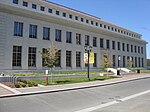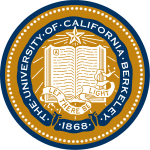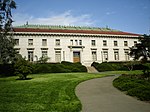Doe Memorial Library
1911 establishments in CaliforniaAC with 0 elementsFederal depository librariesLibraries in Alameda County, CaliforniaLibraries on the National Register of Historic Places in California ... and 5 more
Library buildings completed in 1911National Register of Historic Places in Berkeley, CaliforniaNeoclassical architecture in CaliforniaUniversity and college academic libraries in the United StatesUniversity of California, Berkeley buildings

The Doe Memorial Library is the main library of the University of California, Berkeley Library System. The library is named after its benefactor, Charles Franklin Doe, who in 1904 bequeathed funds for its construction. It is located near the center of the Berkeley campus, facing Memorial Glade, and is adjacent to the Bancroft Library. In 1900, Emile Benard won an architectural competition for the design of the library, and the Neoclassical-style building was completed in 1911. The Doe Library building is the gateway to the underground Gardner (Main) Stacks, named in honor of David P. Gardner, the 15th President of the University of California.
Excerpt from the Wikipedia article Doe Memorial Library (License: CC BY-SA 3.0, Authors, Images).Doe Memorial Library
Sather Road, Berkeley
Geographical coordinates (GPS) Address Website External links Nearby Places Show on map
Geographical coordinates (GPS)
| Latitude | Longitude |
|---|---|
| N 37.8721 ° | E -122.2594 ° |
Address
Doe Memorial Library
Sather Road
94720 Berkeley
California, United States
Open on Google Maps







